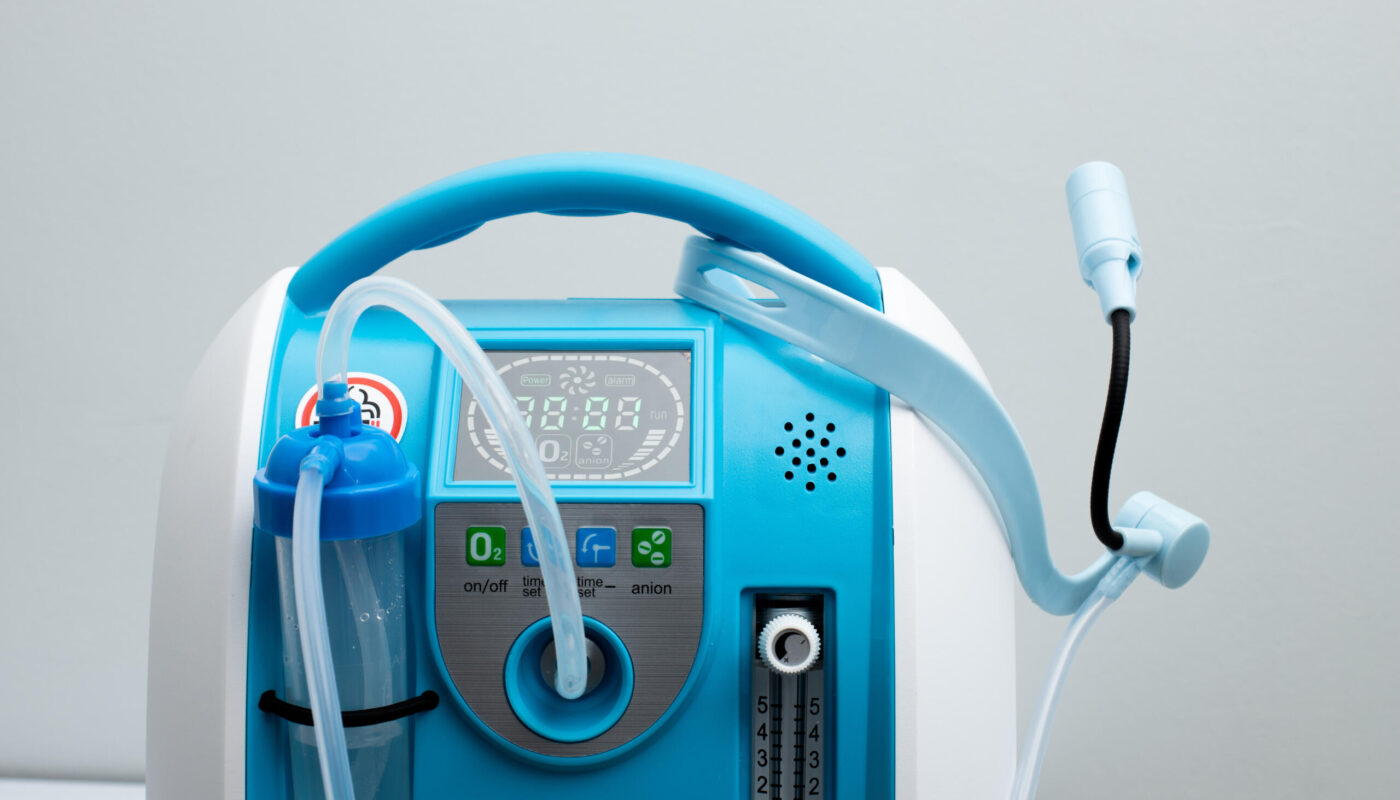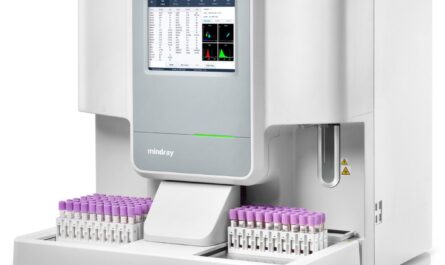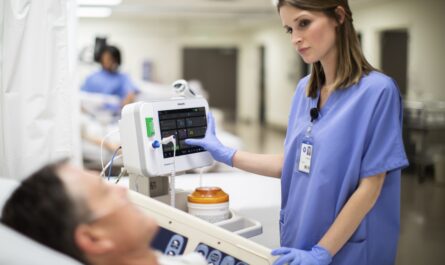What is an Oxygen Concentrator?
An oxygen concentrator is a medical device that concentrates the oxygen from ambient air by selectively removing nitrogen to supply an oxygen-enriched product gas for respiratory therapy. Rather than depending on compressed oxygen cylinders, an oxygen concentrator continuously produces oxygen-enriched air through an electric-powered compression and separation process.
Oxygen concentrators are commonly used for home oxygen therapy to treat various medical conditions that reduce the amount of oxygen in the blood, most notably chronic obstructive pulmonary disease (COPD) and restrictive lung diseases. By providing supplemental oxygen, a concentrator helps a person maintain adequate oxygen saturation levels in the blood and relieves symptoms of shortness of breath or hypoxemia.
How does an Oxygen Concentrator Work?
An Oxygen Concentrator utilizes a technique known as pressure swing adsorption to separate nitrogen from ambient air and concentrate the resulting product gas into more than 90% pure oxygen. Here is a brief overview of the main stages in the oxygen concentration process:
– Ambient air is compressed by an electric blower into one of two adsorption towers filled with zeolite molecular sieve materials that selectively bond nitrogen atoms more strongly than oxygen atoms.
– As nitrogen molecules are adsorbed into the zeolite, concentrated oxygen remains in the air stream and flows to an oxygen reservoir tank.
– Meanwhile, the second adsorption tower undergoes a pressure reduction step which releases the previously adsorbed nitrogen.
– The towers alternate between the adsorption and pressure reduction steps so that a continuous supply of oxygen-enriched gas is produced and delivered through flexible tubing to the patient.
– To ensure the highest oxygen purity and flow rate, various sensors and control circuits carefully regulate the pressurization and depressurization cycles within the concentrator.
Main Types of Oxygen Concentrators
Pulse Dose Oxygen Concentrators
Lower-cost pulse dose concentrators deliver oxygen in regular intervals based on pre-set settings rather than a continuous flow. Pulses of oxygen-enriched air are released from an internal reservoir periodically, such as every two minutes. These provide lower average flow rates up to about 2 liters per minute.
Continuous Flow Oxygen Concentrators
Higher-end continuous flow concentrators maintain an uninterrupted stream of oxygen coming directly out of the device. Flow rates can be adjusted up to a maximum of around 5 liters per minute to meet a person’s oxygen needs. Continuous flow concentrators are more widely used for supplemental oxygen therapy.
Advantages of Oxygen Concentrators
– Convenience – No carting around heavy oxygen cylinders. A concentrator plugs into a standard wall outlet to provide oxygen wherever needed.
– Cost Savings – While initial costs may be higher than cylinders, concentrators eliminate recurring expenses of oxygen refills over time.
– Mobility – Lightweight and portable concentrator designs allow for travel and active lifestyles. Some portable concentrators operate on batteries for oxygen on-the-go.
– Constant Supply – An oxygen concentrator continuously produces oxygen from ambient air on demand 24/7 without interruptions from running out of pressurized gas.
– Purity – Concentrated oxygen produced has over 90% purity, meeting medical grade specifications for supplemental oxygen therapy and respiratory treatments.
– Safety – Eliminates risks of storing pressurized oxygen canisters and fire hazards involved with compressed gas. Concentrators do not pose explosion dangers.
– Customization – Many models offer adjustable flow rate settings, pulsed doses, and portable options to adapt to varying levels of activity and symptoms.
An oxygen concentrator harnesses atmospheric oxygen through an energy-efficient concentration process that delivers a convenient and cost-effective solution for continuous long-term home oxygen use. For patients on supplemental oxygen, a concentrator overcomes many drawbacks of oxygen cylinders for respiratory therapy.
Maintenance of an Oxygen Concentrator
Proper maintenance is important to ensure an oxygen concentrator functions optimally and delivers safe oxygen over its service life. Concentrator filters should be replaced regularly, such as every 6 months, to prevent dust and dirt buildup that could reduce performance or purity levels. Routine filter changes help the internal airflow and oxygen production run smoothly. Periodic cleaning of exterior surfaces also keeps the concentrator functioning as intended. Professional servicing by a qualified technician yearly is recommended for thorough component inspections, performance testing, and any necessary part replacements. Following basic maintenance routines helps prolong the lifespan of an oxygen concentrator and delivers healthy oxygen consistently for years of respiratory therapy use at home.
When is an Oxygen Concentrator Prescribed?
A doctor may prescribe supplemental oxygen therapy using an oxygen concentrator for patients experiencing low blood oxygenation levels due to chronic lung diseases. Some common medical conditions treated with home oxygen concentrator use include:
– Chronic Obstructive Pulmonary Disease (COPD): Diseases such as emphysema or chronic bronchitis that obstruct airflow and reduce lung function.
– Idiopathic Pulmonary Fibrosis: Scarring of the lungs without a known cause that makes breathing difficult.
– Lung Cancer: May lower oxygen uptake depending on location and severity of tumors.
– Pneumonia: Bacterial or viral lung infections where oxygen levels remain low after illness.
– Pulmonary Edema: Fluid buildup in the lungs interfering with oxygen exchange.
– Pulmonary Hypertension: High blood pressure involving the arteries in the lungs.
– Cystic Fibrosis: Inherited disease causing thick, sticky mucus production in the lungs.
An oxygen assessment may be needed involving breathing tests, walking tests, and arterial blood gas analysis to determine if supplemental oxygen with a concentrator is clinically necessary for an individual’s symptoms and lifestyle. A prescription sets appropriate oxygen flow rate levels.
Oxygen concentrators have emerged as a leading solution for delivering supplemental oxygen therapy safely, conveniently, and cost-effectively in the home setting for various chronic lung diseases and respiratory conditions. Proper use and maintenance of a concentrator as prescribed ensures maximum benefits of oxygen treatment over the long term.
*Note:
1. Source: Coherent Market Insights, Public sources, Desk research
2. We have leveraged AI tools to mine information and compile it




